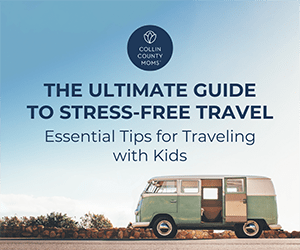Last fall, we built a pool when our kids were ages three and one. We knew we wanted a pool and we knew it had to be safe. I did a lot of research, asked a lot of questions, and set up a backyard where we could have fun and be super safe. During the process, SO many questions started to bubble up: Will it be fenced in? How do we teach them what to do? Should we get a back-door alarm? I’ve compiled a list of tips should you be in the market for a pool in your backyard—a pool safety checklist to make sure yours is a safe, kid-friendly set up. 
Pool Safety Tips
√ “Catch a Kid”/Pool Fence Coupled with Alarm or Lock
Perhaps the most important part of our pool is our pool fence. We worked with a company out of Dallas called Infant House. They specialize in all aspects of baby-proofing a home. We actually used them to put magnetic locks on all of our cabinets, baby gates, and more. When the time came to fill the pool with water, we had Infant House install a removable fence from Pool Guard Texas. They drill one-inch holes into the decking, about three feet apart, and a mesh self-locking fence is then constructed. It’s fastened to the walls on both sides, and as long as all of the latches are in place, the gate will self-lock upon shutting. It’s easy, safe, and doesn’t totally wreck the view.
We also decided to install a lock on our interior door that leads to the pool. Locks at least five-feet-high are a great way to provide protection. There are many different types of deadbolts but one of the more discreet-looking ones is from The Door Guardian by Cardinal Gates, and is typically used on inward swinging doors. It was recently named “one of the best new child safety products” by the National Safe Kids Campaign.
√ Floating Alarm
If you Google pool alarms, about 200 results pop up! The most popular one used in my circle of moms is the Pool Patrol Floating Pool Alarm. It floats on the surface of the water and an alarm will sound when or if a child or pet falls in. The alarm sounds both from the device in the pool and throughout the house, up to 200 feet away.
√ General Swimming Safety Tips 
My advice: Splurge on swim lessons. When I was researching swim lessons and coaches, I was overwhelmed. I didn’t really know where to start and how effective some programs would be compared to others. We looked at group swim lessons, public pool lessons, private in-home lessons, and chains such as Emler and Lifetime.
Find a place that works for your family and just begin somewhere. Water safety is imperative; “for every child who dies from drowning, another five receive emergency department care for nonfatal submersion injuries,” according to the CDC. Additionally, a must-read linked here for 10 safety tips to prevent drowning.
In the end, we decided to do one-week immersion, in-home lessons with a reputable and quite amazing retired competitive swim coach. She came with a hefty price but she was worth every penny. In one week, my kids learned the ins and outs of pool etiquette, safety, and within the week, she had my four-year-old AND two-year-old swimming. It was wonderful for us, but there are many swim lesson options, all that will benefit the child.
Life vests have become game changers for us, too. We always have them around! Now that they are actually swimming, we are out of them; however, if we ever go to a lake, crowded pool, or resort, we have them with us. See some of CCMB’s favorite lifejackets highlighted in this post about the best summer toys and gear.
What would you add to our pool safety checklist?














If possible can you email me the information on the swim instructor please 🙂
Yes, please email me at sarahshiplettyoga@gmail.com